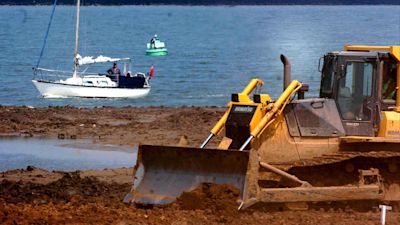Millions of tonnes of excavated Crossrail clay creates RSPB sanctuary in Essex

"We need more places like Wallasea Island," the RSPB said
Millions of tonnes of clay excavated from Crossrail's tunnels have been used to create one of Europe's largest nature reserves at Wallasea Island in Essex.
A total of 1,528 shipments delivered 3 million tonnes of material removed to build London's Elizabeth Line, mostly transported by rail to Kent before being shipped to Wallasea.
The ambitious project transformed 670 hectares of farmland back into coastal marshland as it originally was 400 years ago.
The area now provides a thriving wetland for thousands of migratory birds and helps protect against the impact of climate change on people and wildlife including coastal flooding.
"This is an amazing place for wildlife and we need more places like Wallasea Island," said Alan Johnson Area Manager, Kent & Essex RSPB.
"It was very innovative, I don't think anyone has done anything quite like it before so it was all a bit uncertain, but the results have been fantastic," he added.
The wetland nature reserve is twice the size the City of London and one of Britain's most innovative flood defence systems.
The project was a key part of Crossrail's sustainability strategy with a total of over 6 million tonnes of material excavated – enough to fill Wembley stadium 3 times.
Half of that was donated to the RSPB for Wallasea and the rest for agricultural land and recreational facilities.
Transporting the capital's underground clay by rail and sea took 150,000 lorries off the streets of London.
Want a quick and expert briefing on the biggest news stories? Listen to our latest podcasts to find out...